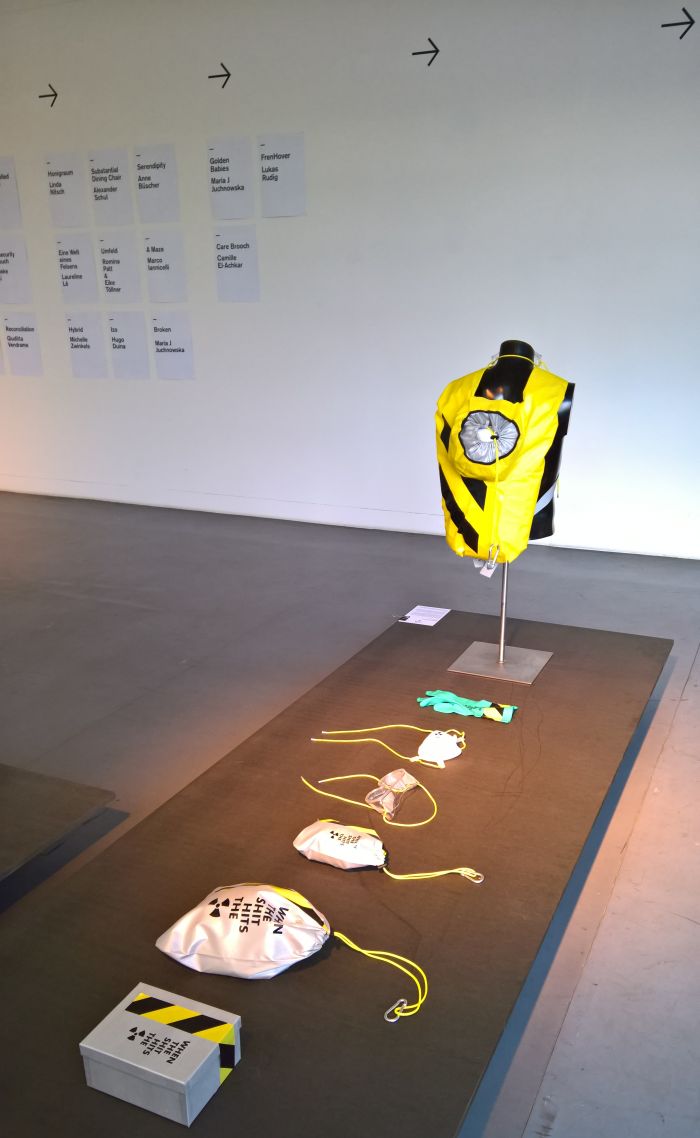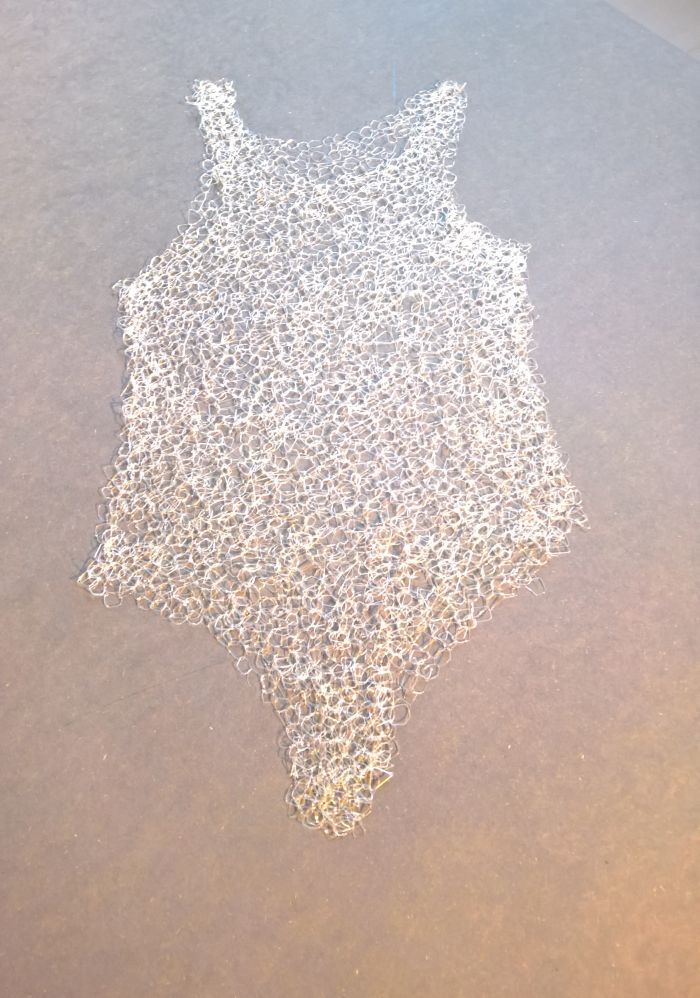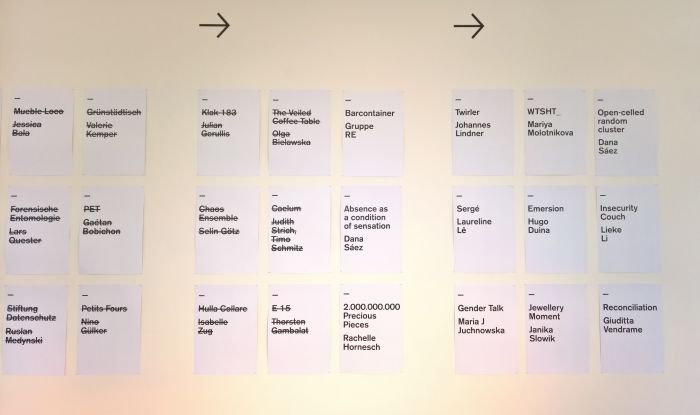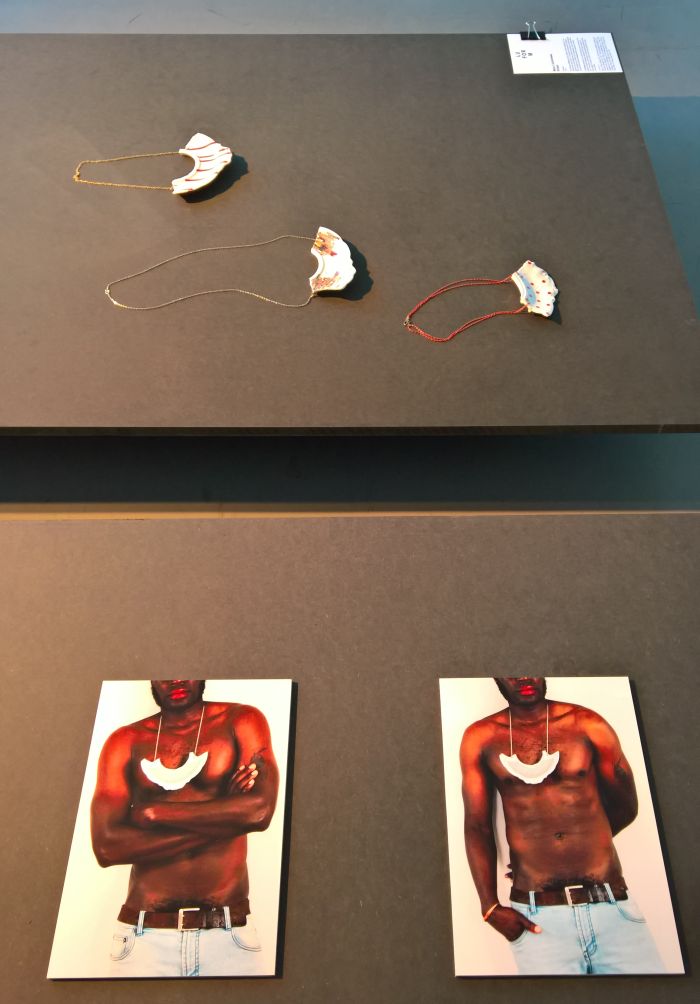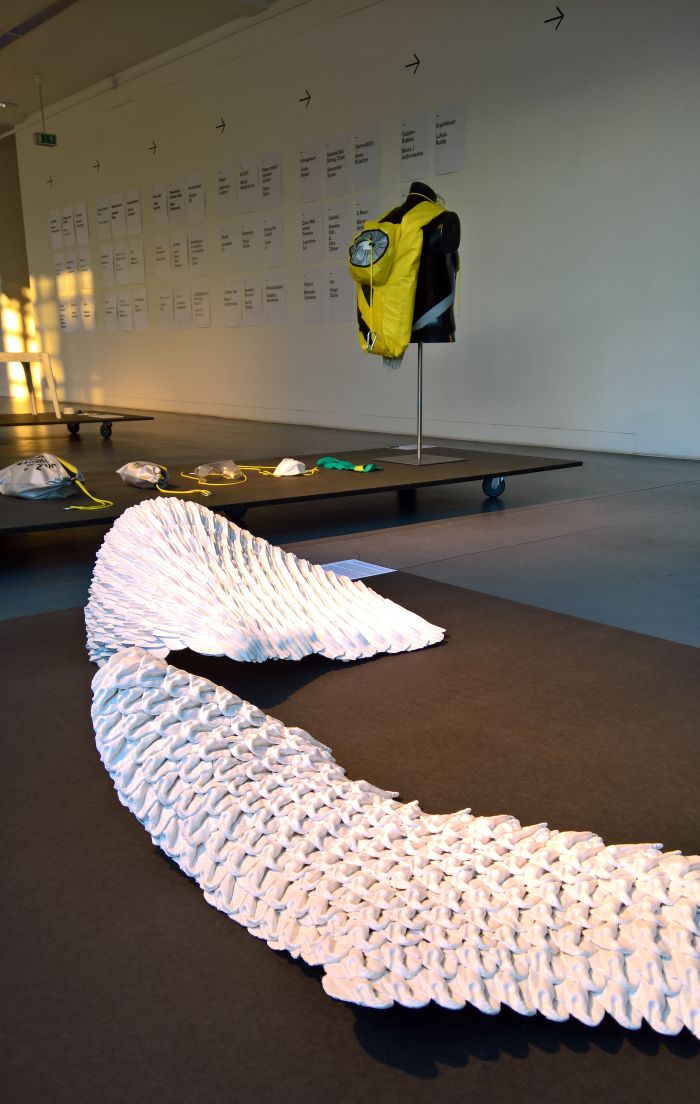The 6th edition of LuForm Aachen is being staged, as the title succinctly implies, in conjunction with the Reciprocity Design Triennale, an event nominally based in the Belgian city of Liège but which, and as with LuForm, integrates creatives and creative institutions from across the Meuse–Rhine Euroregion. And therefore a most logical and natural cooperation
As an exhibition LuForm 6 also reflects one of the principle themes of Reciprocity 2018: fragility.
Whereby, if the exhibitions in Liège primarily discuss practical considerations on fragility, then the presentation in Aachen is much more concerned with speculative, theoretical, abstract, artistic considerations on the same.
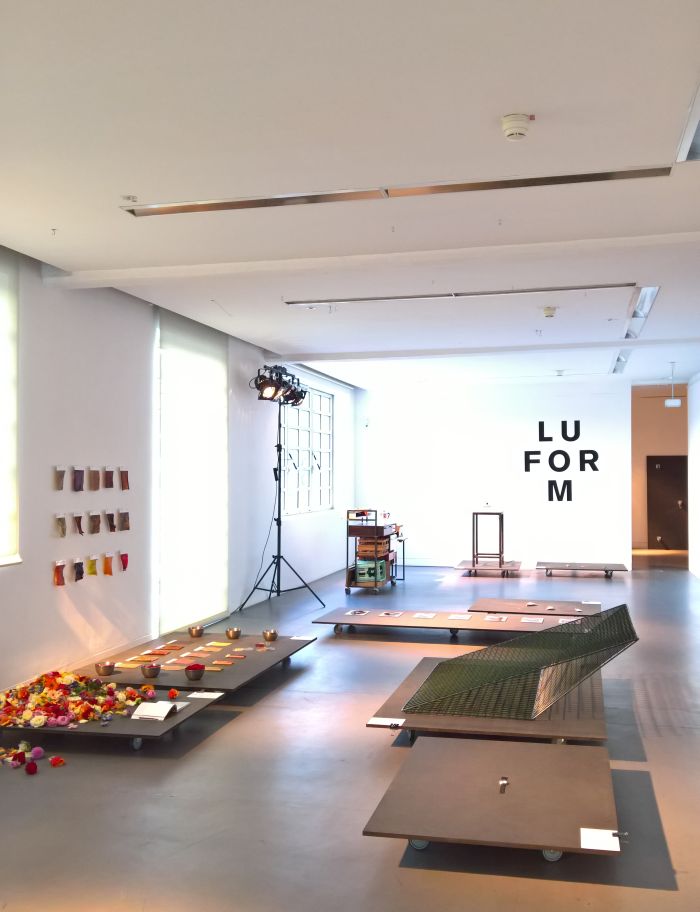
Conceived as an ongoing project by the Ludwig Forum für Internationale Kunst, the Design Department of the FH Aachen and the creative network Designmetropole Aachen, LuForm was inaugurated in March 2017 as a platform for contemporary design within the (principally) contemporary art focused Ludwig Forum. We discussed the background to LuForm in a previous post, and so refer you there dear reader. Here it suffices to say that as a platform LuForm presents works from creatives with a link to the tri-nation German/Netherlands/Belgium region in which Aachen sits, a concept which, pleasingly, means it presents not only works by independent designers based in the region, but also students from the many creative colleges in the region, regardless of how far they may have travelled to study there.
Whereas until now LuForm was a presentation format without theme, other than interesting, original, engaging design, for its sixth edition the organisers took the, logical as pleasing, decision to cooperate with Reciprocity, meaning a summer spent viewing submitted projects, and visiting design school semester exhibitions on the look-out for projects, which have a interesting, original, engaging position to fragility.
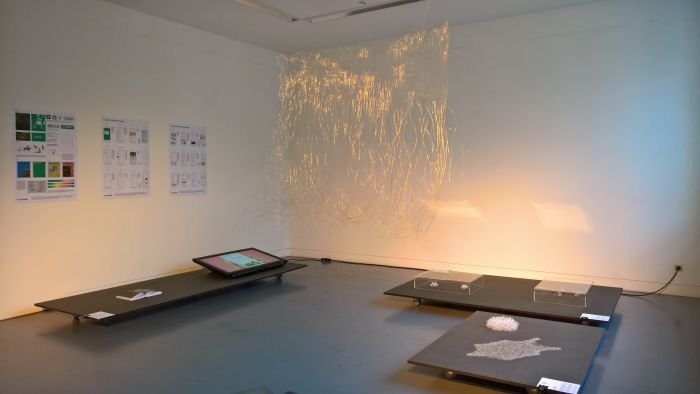
As we noted in context of our post from the exhibition Fragilitas at La Boverie Liège, although, arguably, most commonly understood as being something directly tactile and/or visible, fragility is a much more multi-faced and multi-faceted expression of the inherent condition of all systems, be they physical, social, environmental, political, etc, is that to which all systems naturally tend, and a state of affairs LuForm 6 plays very adeptly with.
One is confronted, for example, by direct, tangible fragility, including environmental fragility as explored in projects such as Honigraum by FH Aachen graduate Linda Nitch which proposes a system for integrating bees into urban environments, not just an interesting proposal in terms of the currently very fragile environment in which bees have to exist, but also important if urban farming is really to be a viable future for global food production, for resolving questions of our fragile existence; and also less tangible, less visible forms of fragility, such as mental fragility: through her Insecurity Couch LUCA Genk graduate Lieke Li transforms the sense of shame and guilt the child of a mother with depression experiences into an object, and thereby making visible a (largely hidden) daily reality, a reality which many consider a private one, but is universal, and a public health issue as much as a personal health one.
In addition to the tangible/intangible juxtapositions inherent in fragility, LuForm 6 also deals very pleasingly with the many contradictions inherent in fragility, and for all that fragility can be both a source of beauty and strength but also of weakness and fear.
The beauty of fragility being more than ably demonstrated in, for example, Sergé by Laureline Lê, a weave created from rolls of receipt paper and which presents itself with a decorum and resilience all of its own, while fragility as a source of strength can be experienced through, and amongst other projects, the table Izo from Hugo Duina which uses a highly improbable connector to create a, and as far as we can ascertain, very stable connection that plays with its fragility, almost taunts you with it, and thereby underscores the inherent force fragility can be.
However, because each force must have one equal but opposite to maintain equilibrium, fragility can also be a source of weakness. The project FrenHover, for example, developed by Lukas Rudig in conjunction with Jens Wischnewsky, sees artificial intelligence systems play Chinese Whispers with each other: one describing a photo, a second attempting to recreate it based on the first description, the gap between the two neatly underscoring the fragilty that can exist in digital systems, the weakness that can exist in digital systems, a weakness which may produce an interesting artistic result in a project such as FrenHover, could be fatal in other contexts.
Fragility can also be a more direct source of danger, in, for example, the case of the freely acknowledged fragile state of the Tihange and Doel nuclear power stations in Belgium. Two very fragile nuclear power stations which sit upwind of Aachen, or put another way, Aachen is downwind of them, which troubles a goodly few people in Aachen: as you wander through the city you see innumerable protest posters in windows, or to quote the video produced by MAFAD Maastricht graduate Mariya Molotnikova to accompany her project WTSHT_, you see "posters, posters, posters, posters", in windows. The people of Aachen want the reactors turned off, the Belgian authorities are keen to keep them running, WTSHT_ is the immediate response kit, initial survival tools the people of Aachen will need when the fragility becomes to great, When The Shi.......
When one considers that the area around Aachen, or perhaps better but given LuForm/Reciprocity tie-up, the area around Aachen/Liège, is one of those very direct examples for how the freedoms and cooperations inherent in the EU improves and simplifies lives on a daily basis, the sort of area that must deeply rile English Conservatives, it's long struck us as odd that no agreement can be reached on Tihange and Doel. But then on reflection maybe they stand, in their fragility, for the inherent fragility of the EU, for the fact that each nation's government will always put their own party political interests before that of the individual, a fragility inherent in political systems, which in itself isn't a danger, the danger arises when one neglects it, when the fragility becomes the guiding voice, or as we noted from Liège,"the secret to existence is largely a perpetual struggle to prevent fragility becoming the defining condition of a system/organism".
Which raises the question if we don't all need a more universal WTSHT_ backpack, one that protects us from imminent political meltdown and fallout......
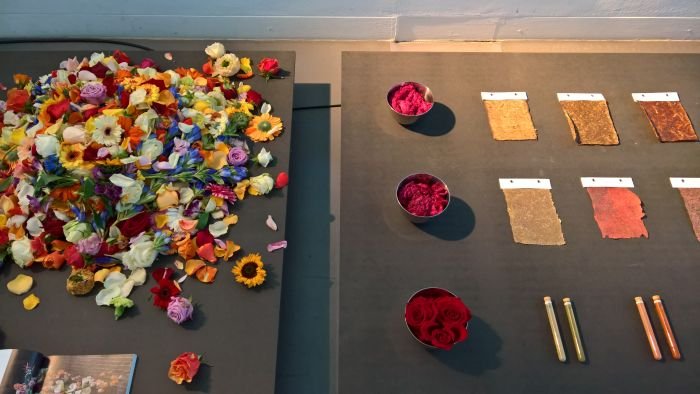
Whereas until now LuForm has been based on a social media, blog-esque, exhibition design concept whereby new projects are added at (regular) irregular intervals at the "front", and as they are older ones are pushed ever further backwards until they vanish into a virtual archive, for LuForm 6 all the projects are new, have, as noted above, been specially selected in context of their relationship to fragility; however, if we've understood things correctly, which with us is never guaranteed, the familiar format will return for future editions. Whereby the word "future" is important, last time we were at LuForm the future was still open, as in uncertain, it seems to be on much firmer footing now, paradoxically appears to be less fragile. For us a positive development, considering as we do that as a platform it is not only interesting and relevant but also is the sort of thing museums should be doing: providing a professionally organised platform for local designers that not only presents their works but also helps explain to the public contemporary design, contemporary design positions, contemporary design research and therefore seeks to nurture and foster a healthier relationship among a wider public to contemporary design.
One of the things that appealed to us about LuForm when we first visited was that the objects stood for themselves, that it was, as we noted, "a sammelsurium of unconnected objects, objects which share nothing save a very lose geographic connection", and that remains the case with LuForm 6 despite the unifying theme. On the one hand, and as with any design exhibition we have ever visited, many of the projects have only the most tenuous connection to the theme, one could say a fragile connection, and on the other, the sheer variety of genres represented mean that the projects exist as a joyous disparity: presenting works from some nineteen creatives across genres as varied as jewellery, fashion, photography, furniture, graphic and on to the more abstract, in many regards they don't fit together, but do. Effortlessly. Because they all exist for themselves as projects with their own distinguishable character, with their own required level of engagement, with their own intentions, their own voice, and their own, collective, inherent fragility.
LuForm 6 - LuForm Meets RECIPROCITY runs at the Ludwig Forum Aachen, Jülicher Straße 97–109, 52070 Aachen until further notice. Full details, including information on the current temporary exhibition at the Ludwig Forum, can be found at http://ludwigforum.de/
In addition to be being staged within context of Reciprocity LuForm 6 is also staged in contecxt of the 2018 Hallo Designer Tour an annual, decentral, tri-nation event which in 2018 features events in locations as varied as, and amongst many others, Maastricht, Hasselt, Eupen, Namur or Eschweiler. Full details can be found at https://hellodesignertour.eu/
